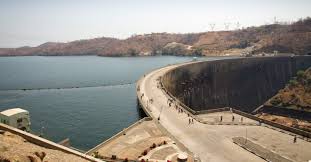Energy deficit costs Zimbabwe 6pc of Gross Domestic Product
POWER shortages, that have bedevilled Zimbabwe for years, cost the country a total of 6,1 percent of Gross Domestic Product per year and the southern African country will require billions of dollars to fix the challenge.
In 2018, Zimbabwe commissioned and switched on the US$533 million Kariba South Power Station Extension Project adding 300MW to the national grid.
This year, Hwange 7 and 8 were also commissioned adding another 600MW to the national grid to bring the installed capacity to 2 570MW.
However, despite such achievements, Zimbabwe’s electricity sector still faces major challenges with the country facing power outages of 12–14 hours a day.
The installed capacity is still insufficient to meet demand, and rolling blackouts give rise to a significant burden on Zimbabwe’s economic growth and competitiveness.
According to the World Bank, under a report titled, “Electrifying Zimbabwe’s Growth through Reliable and Universal Energy Access”, the rolling blackouts cost the country 6,1 percent of GDP per year.
The total cost is comprised of 2,3 percent of GDP in generation inefficiencies and excessive network losses, and 3,8 percent of GDP on the downstream costs of unreliable energy.
Victor Steenbergen, senior country economist, at the World Bank (Zimbabwe office), speaking at the launch of the report said energy constraints translate “into lower economic growth and lower household incomes” and are considered the “single biggest brake on the expansion of mining and mineral processing.”
“Electricity deficits are particularly damaging for the mining sector, given its highly energy-intensive characteristics, so that unreliable and expensive electricity supplies reduce the margins of existing operations and weigh heavily on the feasibility evaluations for expansions and new projects.
“Power shortages also significantly hurt the agriculture and agro-processing sector by undermining irrigation, together with cold chain and storage facilities.
Power shortages will negatively weigh on Zimbabwe’s hopes to achieve the high growth rates needed to move toward upper middle-income status by 2030.
This is at a time when peak electricity demand is projected to grow substantially to 5 177MW by 2030 and according to the World Bank, “the associated grid network expansion to 2030 is estimated to cost a total of US$4,4 billion.”
The fastest and cheapest way to produce more power from 2024 to 2026 would be through solar plants, according to the global lender.
“Subsequently, generation expansion efforts would comprise gas and hydropower power plants, in addition to more solar.”
However, the World Bank said attaining of Government’s ambitious targets to achieve reliable and universal energy access by 2030 will require a combined focus on strengthening the energy sector’s financial situation, improving planning and co-ordination, and encouraging and de-risking private sector participation.
An indicative financing plan envisages that the Government would finance 85 percent of the US$4,4 billion, while consumers and the private sector would finance 11 and 4 percent, respectively, according to the World Bank.
“The projected amounts will be challenging to raise from domestic resources alone, and there is an urgent need to involve more private investors and the international development community to help accommodate the financing needs.”
Speaking during a panel discussion at the launch of the World Bank report, former Zesa chief executive officer Josh Chifamba blamed the country’s energy challenges on an unviable tariff.
Chifamba said exchange rate losses have always been “our nemesis” when it comes to the generation and provision of power in the country by Zesa.
He said the situation has been worse in the last 20 years.
“Sometimes it’s not an issue of the right tariff not being given. It is given, but not sooner than it is given everything else moves with the exchange rate. So that is the biggest problem in the sector.”
He said adjusting electricity tariffs is like a dog chasing its tail given the continuous movement of the exchange rate and inflation.
“The sector has not been viable because of one, lack of a cost reflective tariff and secondly because of the instability in the macroeconomic environment.”
In its report, the World Bank said the biggest problem is that energy tariffs do not reflect the efficient costs of electricity services provision.
“With tariffs substantially below these efficient cost recovery levels, ZETDC experienced a significant revenue-cost gap in 2020 and 2021 exceeding US$200 million at its peak in 2020.
ZPC experienced an even larger revenue-cost gap between 2019 and 2021, peaking at almost US$1 billion in 2019.
“The revenue-cost gap was especially wide during the period of rapid currency depreciation and narrowed with the introduction of the forex auction market in 2021,” reads part of the World Bank report.
Chifamba said authorities should adopt the same method as used in the fuel sector “and allow customers to pay in foreign currency. That way you will ensure that electricity is more available”. — Business Weekly










